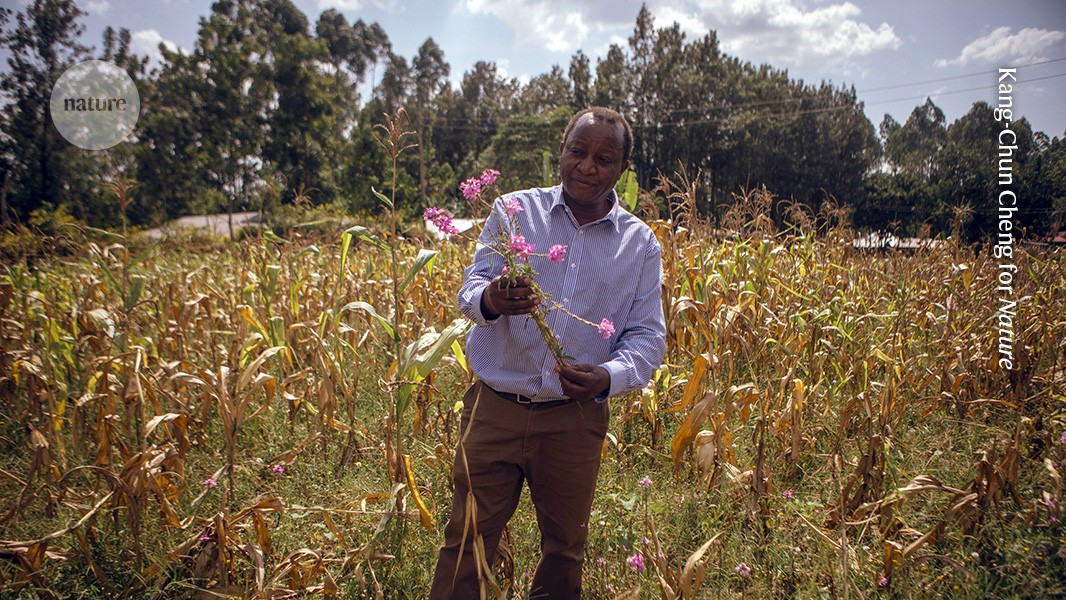“I’m a plant pathologist at the Kenya Agriculture and Livestock Organization in Machakos, east of Nairobi. For more than a decade, I’ve been working on a sustainable way to control Striga, a parasitic weed that damages farmers’ crops here in Kenya.
This photo, taken in January this year, shows me holding a Striga plant in a maize field in western Kenya, where Striga infested 73% of farms in 2009. It steals nutrients through the crops’ roots, sometimes destroying entire harvests. Farmers try pulling it out, but the weed is extremely resilient because its tiny seeds can lie dormant in the soil for a long time.
People have tried several ways to control Striga, including push–pull farming (in which companion plants are used to attract or repel weeds) as well as breeding crop strains for Striga resistance. But these methods have had limited success.
Since 2008, I’ve focused on using a fungus called Fusarium oxysporum f. sp strigae, that kills Striga without harming crops. The technology was developed at Montana State University in Bozeman, and in field trials we found that it restored yields of Striga-infested crops by around 40%.
Making this solution practical for farmers hasn’t been straightforward. We first gave them wooden toothpicks colonized by the fungus, that they placed in boiled rice to propagate it and plant in their fields. But farmers found this method expensive, cumbersome and a bit wasteful.


